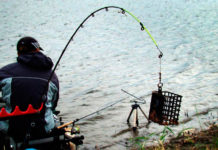Nowadays, there are many opportunities for the development of any hobby. This applies, in particular, to the art of playing the guitar. But for those who plan to go beyond an acoustic instrument, there will always be a need to purchase a "combo". In order to figure out which device is better to buy, the editorial staff of the site "bestx.htgetrid.com/en/" presents you with a rating of the best guitar combo amplifiers for 2020.
Content
- 1 The history of the development of guitar combo amplifiers
- 2 The eternal dispute: a lamp or a transistor?
- 3 Top 10 Best Guitar Amplifiers for 2020
- 3.1 10th place - Roland AC-33
- 3.2 9th place - Line 6 Spider IV 15
- 3.3 8th place - Peavey 5150
- 3.4 7th place - Fishman Loudbox Performer
- 3.5 6th place - Bugera 333XL 212
- 3.6 5th place - Marshall MA50C
- 3.7 4th place - Orange Rockerverb 50 MKII 212
- 3.8 3rd place - Fender Deluxe Reverb
- 3.9 2nd place - VOX AC 30
- 3.10 1st place - Fender Twin Reverb
- 4 In custody
The history of the development of guitar combo amplifiers
Every rock guitarist dreams of one day going on stage, turning the potentiometer of the combo amplifier to the maximum and "punching" the chord so that everyone in the hall will take their breath away. However, such an instrument as a guitar is actively used not only in rock music. There are many styles where the guitar sound is more irreplaceable than the aforementioned genre. In any case, it is very difficult to imagine any concert with a guitar and without a device called a combo amplifier.
It is worth placing all the dots on i and first figure out what are guitar combo amplifiers and what are they made of?
"Combo" consists of 3 main parts:
- Preamplifier;
- Amplifier;
- Cabinet (speaker).
Most often the preamp and amplifier are located together. And it is most correct to call the device a combo amplifier when all 3 components are connected in one case. Nevertheless, sometimes a combination of a “head” and a “cabinet”, which in turn are located in two different buildings, is also called a “combo”. Functionally, the second option, which in professional language is called the Stack, is more suitable for large performances when several speakers are connected to the head.
In addition to the active amplifier, the "head" can also contain various settings. For example, rock musicians always buy a "combo" with the additional function "Distortion" or "overdrive" - this is the very overload (more on that below). The “cabinet” is a box with speakers (one, two, four, etc.).
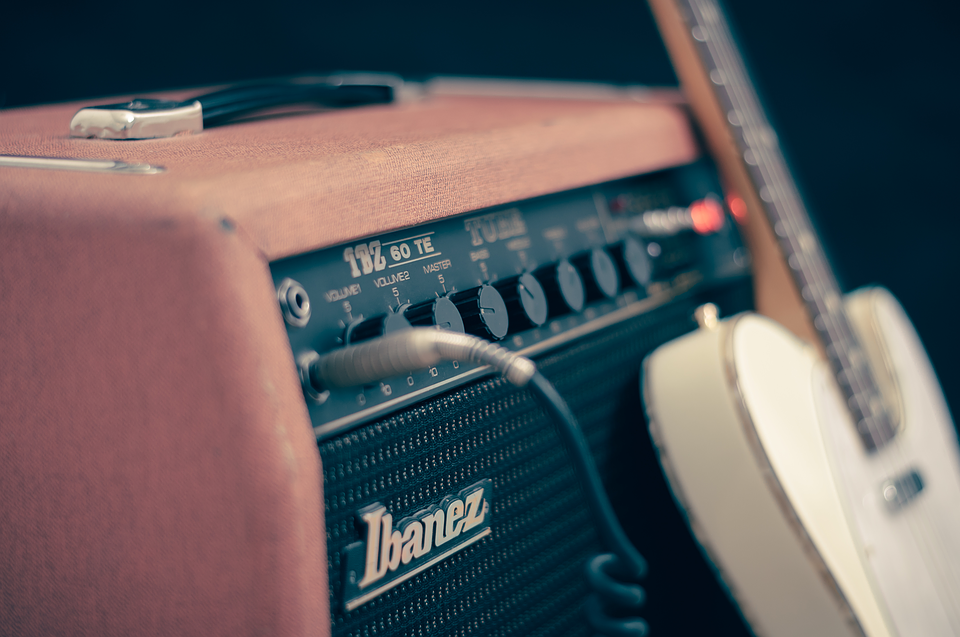
First appearance
Oddly enough, but the first similar units for a six-string "girlfriend" appeared before the electric guitar. Yes, that's right: combo amps were originally designed for acoustic guitars. This need arose against the backdrop of the growing popularity of Hawaiian music. Accordingly, something was required that could amplify the sound, but would not be huge, heavy and uncomfortable.
In the 1930s, amplifiers were invented using electrolytic capacitors and lamp rectifiers. They, as already mentioned above, were used mainly for their main purpose - they amplified the sound of the so-called Hawaiian "pans".
Further development
Comics began to take over the music world. This was due, first of all, to the development of rock and roll and blues, characterized by a hoarse voice and an equally hoarse saxophone. The whole company began to realize that the available clean and soft guitar sound no longer had enough "power". "Six-string" sounded, in modern terms, too pop. Therefore, various experiments with the apparatus began.For example, some have pierced holes in the speaker with their own hands.
The first bells of the "distorted" sound can be considered the overload of the amplifier. It was by bringing the "twists" to the maximum that the performers got the sound they needed. This is how they achieved euphonious distortion in the 50s, since the factory settings of the "combo" gave little room for creativity. All the devices of those years had at their disposal were timbre variations that could only increase the volume of the high-frequency component. However, due to the low power (no more than 15 W) and the primitiveness of the electrical circuits, the quality was very low.
The decisive step for today's famous overdrive was the 1960s experiment by Dave Davis. The guitarist of "The Kinks" achieved a high-quality effect due to the non-standard equipment connection. The fact is that he came up with the idea of connecting the output of an amplifier to the input port of another. Thus, it turned out what today can be called a preamplifier. The latter is an indispensable part of any combo amplifier today.
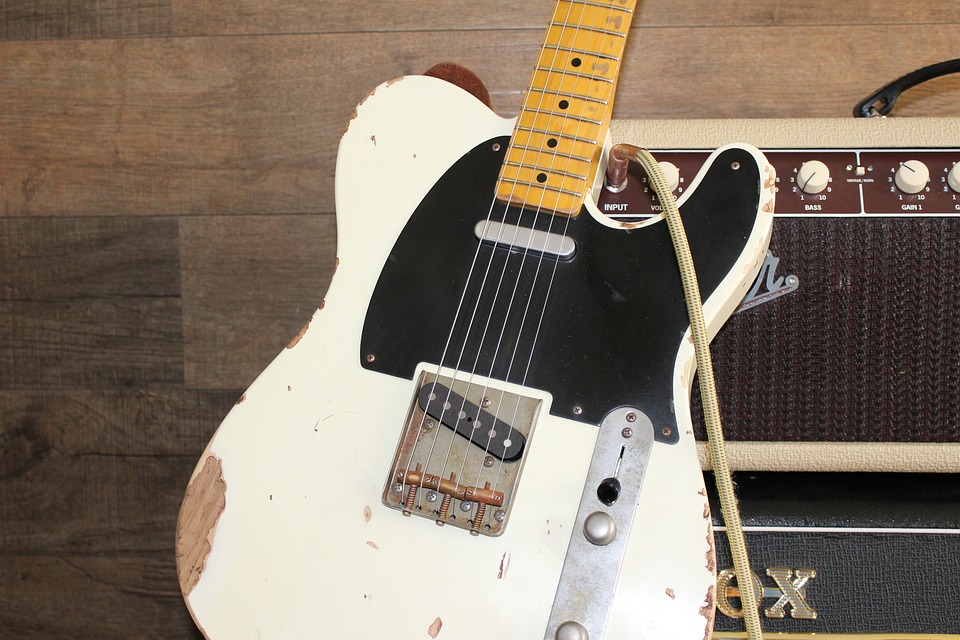
Transistor
The best manufacturers actively sought to mass-produce their devices. But to make them affordable for a wide range of musicians did not allow the type of amplifier device - tube amplification.
But then the transistor came to the rescue. A solid-state device that transforms resistance appeared before the surrounding worlds in 1947. The use of this scheme in the structure of "combo" is attributed to the 60s of the last century. This development of events allowed not only to reduce the average price of equipment, but also to establish mass production. Now musicians could choose between tube and transistor combo amps. But this did not happen immediately.
Mainly thanks to the company Fender (Leo Fender) and some other masters, tube amplifiers not only did not give way to more modern and cheaper transistor amps, but also continued to be monopolists for a long time. However, with the development of rock music, the combo boom has tipped the scales between the two competitors. The popularity of lamp-based models remained among professionals, while beginners more often chose the transistor.
The eternal dispute: a lamp or a transistor?
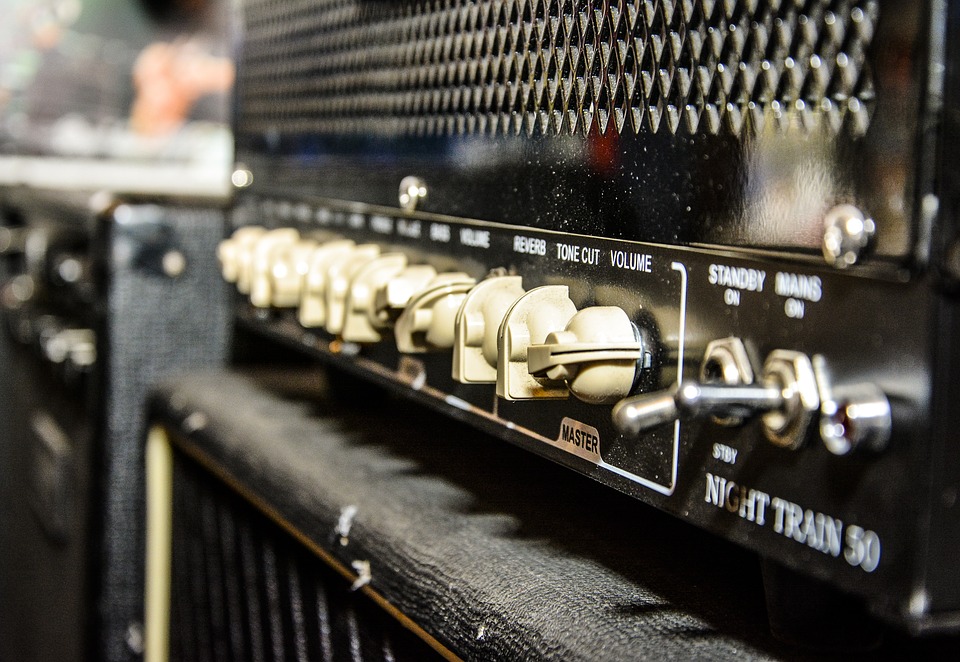
As with many other questions, this is very difficult to find the answer. After all, each type will be very suitable for a particular situation. Just a small example, a young guitarist wanted to buy a guitar amplifier to practice at home. There is absolutely no need for him to purchase a tube "combo". The transistor one will be several times cheaper, more convenient, etc. In general, more appropriate. In contrast, for recording electric guitars within a studio, a lamp will provide more room for sound variation. And the purity will be different.
But what if you are not a beginner guitarist, and not a pro who writes in a studio? How can this endless dispute be resolved?
Unfortunately, there is no answer to this question. But you can try to make an overview of the advantages and disadvantages of both options, and then everyone for himself will be able to make a more informed decision on the choice of one or another type of amplifier.
A Brief Comparison of Tube and Transistor Combo Amplifiers
- Cost. It has long been customary that lamp (progenitors) amps have always cost more. Today, the difference with transistor (descendants) reaches an even greater chasm due to the fact that the demand for lamps comes from professional musicians, studios, etc., who, of course, demand quality and less often look at the price. Competitors have placed greater emphasis on affordability, although sound quality is not lacking.
- Sound characteristic. Despite the seeming subjectivity of this point, according to buyers, transistors give a rougher sound than lamps, which, in turn, have such epithets as: soft, warm, rich [sound].
- Maintainability and depreciation. Here, too, is a double-edged sword. On the one hand, lamp tubes are easier to repair, but you have to repair them more often, because they are more fragile, and the lamps themselves serve well for about 1 year. Transistors are much more difficult to repair, but they break less often.
- Popularity. Later combo amps (transistor) are more popular because they are inexpensive. Rarely does anyone start their musical career with tube "combo".
- Dimensions and weight. The progenitors of amplifiers, even in our time, are heavier and cumbersome (due to their structure). Descendants, however, come in completely different sizes, ranging from those that can be hung on a belt, ending with those that one person cannot lift.
- At high volume. Here again, tube combo amps take over. At the peak of the volume, they give a little overload, but the sound is still noble, while the transistor becomes very harsh and not always pleasant.
- At low volume. How do you make a lamp sound worse than a transistor? That's right, turn down the volume a lot.
Of course, the main strife occurs precisely between the supporters of lamps and the adherents of the transistor. However, there are at least 2 more recognized types of combo amplifiers that are worth saying at least a couple of words. They are: hybrid and digital.
Hybrid amplifier
It was invented by those and for those who do not want to participate in the dispute and want to take out the best from both sides. The solution, of course, is peculiar, and the result obtained could not meet expectations. At least that was the case with the first models. Of course, the creators took into account the errors and eliminated some of the shortcomings.
The hybrid combo consists of a tube preamp and a solid-state main amplifier. Thus, it turned out to try as much as possible to preserve the softness, warmth and purity of the sound created by the lamps and at the same time reduce the cost due to the transistor circuit. But in the end, the sound is not as good and of high quality as that of the lamps, and the whole device is not as budgetary as the transistor one.
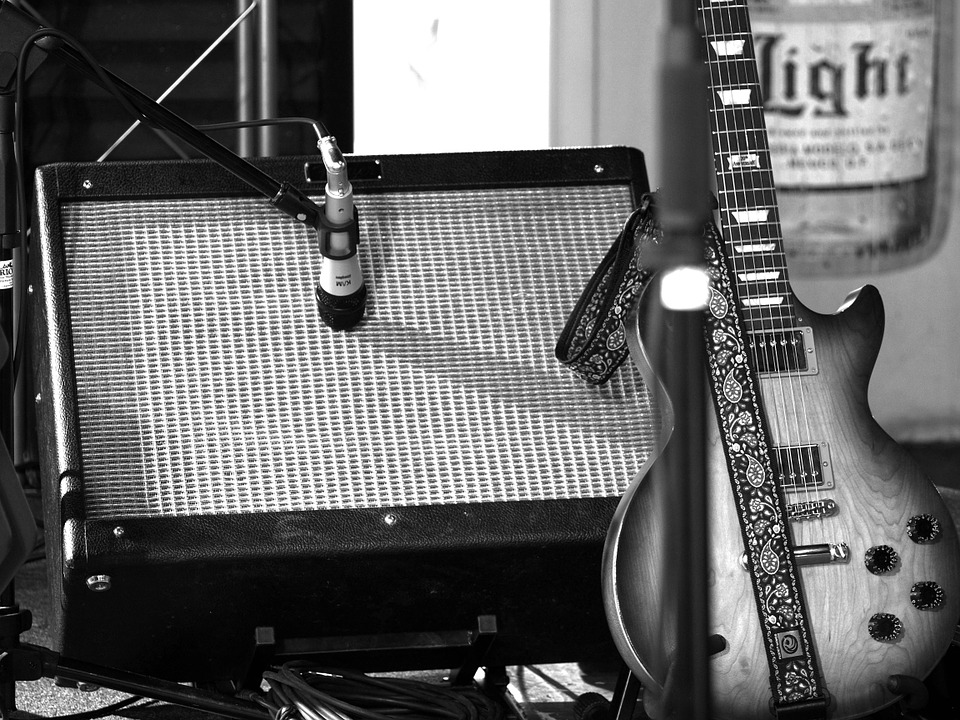
Digital
This is already the trend of the new century, where everything and everyone is becoming digital. The digital system of these devices emulates a tube circuit. Up to a certain point, the sound from such amps was completely unnatural. Today, processors are capable of creating a huge variety of sounds, which is very valuable for those who like to experiment with it. Perhaps this fact is the biggest plus for digital models. However, even the best processors will not give the same tube performance.
What can be summed up? Keep it as short as possible: for beginner guitarists, transistor amplifiers are best suited, and for professionals and for studio work, tube amplifiers.
Top 10 Best Guitar Amplifiers for 2020
The endless disputes between tube and transistor devices, however, do not prevent us from ranking the TOP 10 best guitar combo amplifiers for 2020. Fortunately, there are enough manufacturers, and there is plenty to choose from.
10th place - Roland AC-33
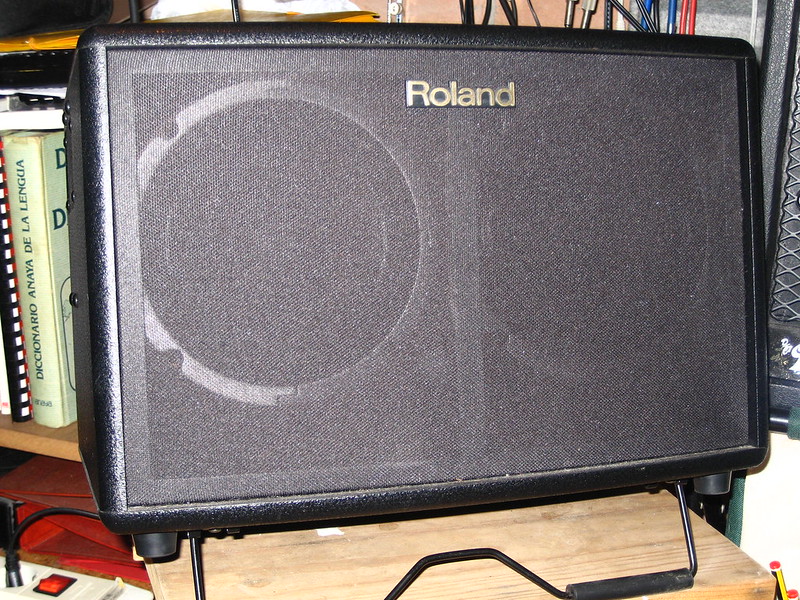
The bottom line of our rating is occupied by a small amp designed for acoustic guitars. Perhaps the most important feature of this device is its ability to operate on batteries. By the way, this is the first combo amplifier in the world that can operate on batteries. Of course, such a function will not be very useful for concert activities, but, for example, to give a small performance in a park or on a pedestrian street - that's the right thing. Also, an additional advantage for performances of this format is the presence of a microphone jack.
However, weak bass and low volume will not be to everyone's taste. And this device cannot be called professional for a number of reasons.
| A TYPE | for acoustic guitars |
|---|---|
| SPEAKER | 2 pcs 5 " |
| POWER | 30 Watt |
| EQUALIZER | Yes |
| NUTRITION | 13 V power adapter |
| PORT | 3.5 mini-Jack; TRS Jack |
| HEADPHONE JACK | Yes |
| WEIGHT | 4.7 kg |
| FOOTSWITCH | not |
| EFFECTS | Chorus, Reverb |
| BATTERY OPERATION | YES (AA 8 pcs) |
| COUNTRY OF ORIGIN | China |
| AMPLIFIER | Transistor |
| BUILT-IN TUNER | not |
Benefits:
- Small dimensions - easy to move;
- There is a headphone and microphone jack;
- Average price;
- High power (30W);
- Looper (40 seconds);
- Works both from the mains and from batteries.
Disadvantages:
- Bass is poorly audible;
- Few settings for effects;
- The sound is not of high quality, especially for the voice.
Output:
Due to its uniqueness, the "combo" from China is popular. Not surprising, because it is quite comfortable and has a lot of power. Among the devices with a microphone input, it is one of the most popular.
9th place - Line 6 Spider IV 15
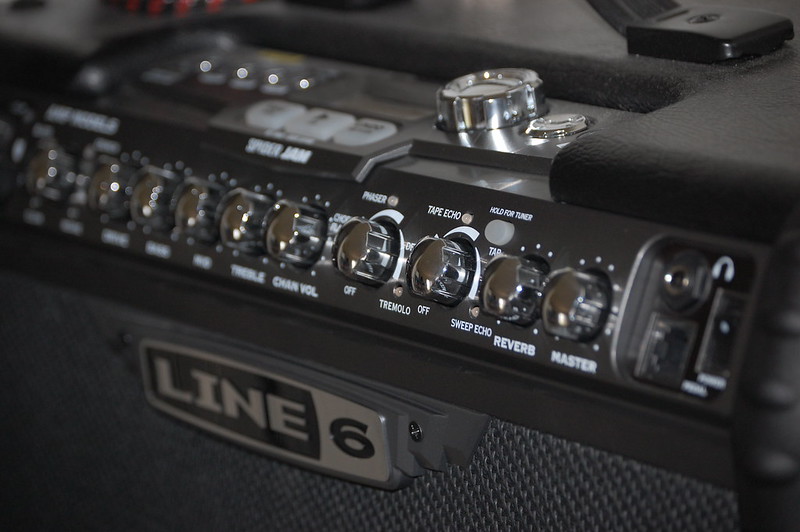
Next in the TOP is a combo for home use. A compact and powerful enough combo amplifier with a built-in processor. He is a prominent representative of the digital generation of sound equipment. Equipped with built-in effects. The amplifier is equipped with 4 modules that simulate the best guitar combo. Switching occurs at the touch of a button.
Also, the device can be used as a speaker by connecting an MP3 player.
| A TYPE | For electric guitars |
|---|---|
| SPEAKER | 1 piece 8 " |
| POWER | 15 Watt |
| EQUALIZER | Yes (three-way) |
| NUTRITION | 220 V |
| PORT | 3.5 mini-Jack; TRS Jack |
| HEADPHONE JACK | Yes |
| WEIGHT | 9.5 kg |
| FOOTSWITCH | Not |
| EFFECTS | embedded processor |
| COUNTRY OF ORIGIN | China (USA) |
| AMPLIFIER | Digital |
| COATING MATERIAL | Vinyl |
| BUILT-IN TUNER | Yes |
Benefits:
- The presence of a huge number of sound variations;
- 6 effects can be used simultaneously;
- Mobile;
- Emulation of world amplifiers;
- Affordable price.
Disadvantages:
- The figure gives a very similar sound, but its "flatness" is still audible;
- The mini-Jack input is not equipped with additional amplification, so if you play music from an external device, it will not turn out very loudly (in this regard, it is better to use it for its intended purpose - for a guitar);
- The built-in tuner is not entirely accurate.
Output:
Very popular among "home" musicians and fans to "play" with sound. In general, a very decent "combo", especially according to reviews. However, the narrowness of the application does not allow him to rise above the 9th line.
8th place - Peavey 5150
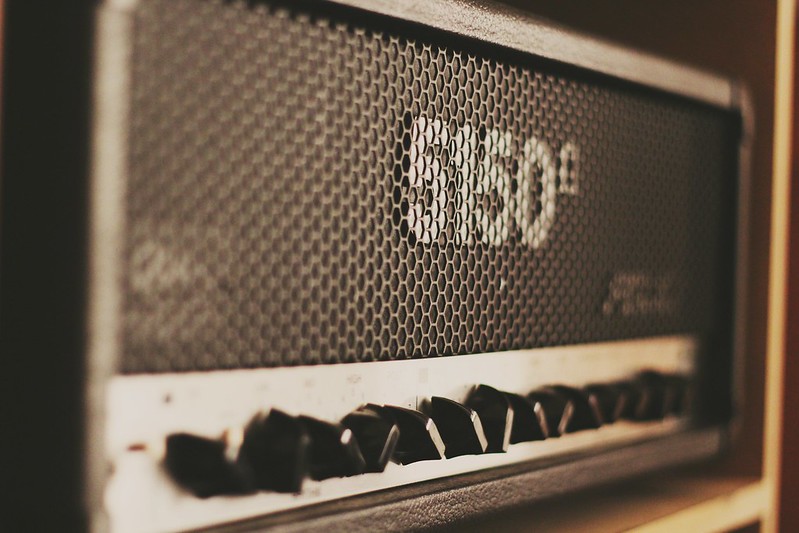
Well, it's time for serious players. They are not ordered from AliExpress as they are purchased for a serious business. Therefore, be sure to try the sound, turn the potentiometers, etc. And so, the eighth in our ranking is the famous Peavey brand with the 5150 series - a real monster of heavy sound. Van Halen himself had a hand in the creation back in the early 90s. It will especially appeal to those who are going to perform music in the style of Metall and its derivatives.
| A TYPE | For electric guitars |
|---|---|
| SPEAKER | 2 pcs 12 " |
| POWER | 60 Watt |
| EQUALIZER | Yes (+ present, + resonance) |
| NUTRITION | 220 V |
| PORT | 2 channels (for clean and for overdrive) |
| FOOTSWITCH | Yes |
| COUNTRY OF ORIGIN | USA |
| AMPLIFIER | Lamp |
| BUILT-IN TUNER | Yes |
Benefits:
- High power: 60W;
- Lamp;
- Stunning overload;
- Convenient adjustment;
- Grounding switch;
- 2 channels - for clean and for overdrive;
- Suitable for playing in different styles.
Disadvantages:
- Ugly appearance;
- Heavy;
- Poor quality of a clean channel;
- Despite the good build quality, the build quality is not very good.
Output:
The configuration of the speakers, and indeed the entire "combo", outwardly makes it look like some old Soviet chest of drawers. Of course, this is not the main thing, but everything should be perfect at a concert. However, for metal musicians, the Peavey 5150 is one of the best choices.
7th place - Fishman Loudbox Performer
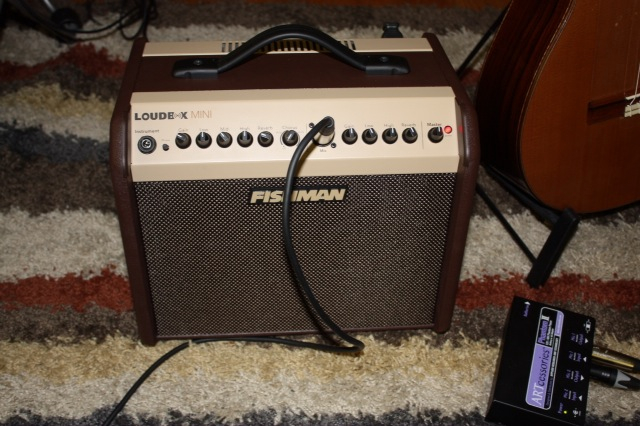
Peavey is followed by Fishman with the Pro-LBX-EX7 Loudbox Performer. Powerful 180 Watt combo with solid state amplification. Unfortunately, today this model has already been discontinued. Nevertheless, as a tribute, I would like to place it in our rating. Very high quality clear acoustic guitar sound - that's what the distinctive Pro-LBX-EX7 Loudbox Performer series is famous for. This amplifier is popular, mainly in the West, so we did not have time to appreciate it.
| A TYPE | For acoustic guitars |
|---|---|
| SPEAKER | 3 pcs: 8 ", 5", 1 " |
| POWER | 180 Watt |
| EQUALIZER | Yes |
| NUTRITION | 220 V |
| PORT | 3.5 mini-Jack; TRS Jack |
| WEIGHT | 13.5 |
| FOOTSWITCH | Yes |
| EFFECTS | effects loop |
| AMPLIFIER | Transistor |
| BUILT-IN TUNER | not |
| HEADPHONE JACK | Yes |
Benefits:
- High power;
- The design allows you to tilt the combo to use it as a monitor when playing while standing;
- Clean is not worse in quality than lamp.
Disadvantages:
- High price;
- Out of production.
Output:
Fishman Performer really was one of the best of its kind. However, not only was, but remains, but the question of where to buy, now you can only answer: exclusively used from other owners.
6th place - Bugera 333XL 212
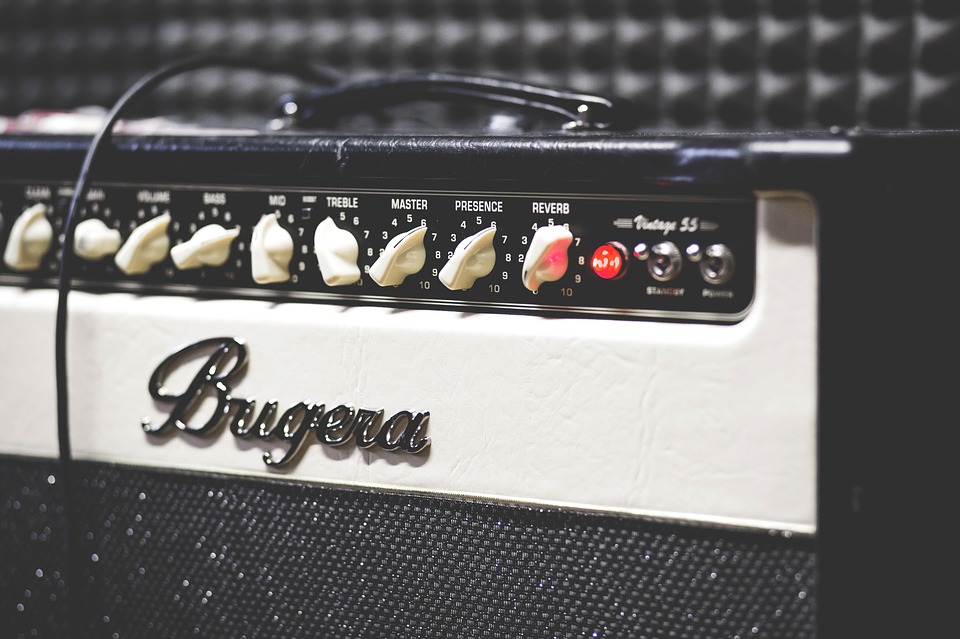
Bouguera got very close to the equator.No less famous than previous models, it has its loyal connoisseurs. In terms of sound quality and effects, it is not far behind the same 5150, but at a significantly lower price, which makes Bugera a more popular model. The amp can be played in many different styles, from simple clean sound for jazz to growling overdrive for metal.
This is achieved thanks to three channels that can be configured separately. Well, you need to switch between them using the footswitch, which, among other things, includes a looper.
| A TYPE | For electric guitars |
|---|---|
| SPEAKER | 2 pcs 12 " |
| POWER | 120 Watt |
| EQUALIZER | Yes (three-way for each channel) |
| NUTRITION | 220 V |
| PORT (CHANNEL) | 3 pcs: TRS Jack |
| WEIGHT | 29 kg |
| FOOTSWITCH | Yes |
| EFFECTS | there is |
| COUNTRY OF ORIGIN | China |
| AMPLIFIER | Lamp (4 pcs) |
| FULL LOAD RESISTANCE | 4, 8, 16 Ohm (switchable) |
Benefits:
- Three channels, each of which can be configured independently;
- Relatively low price;
- High-quality reverb;
- There is a Loop;
- Multifunctional pedal.
Disadvantages:
- Unreliable plastic connector on power supply (melts during long continuous operation);
- In terms of sound quality, it still lags behind its more expensive counterparts.
Output:
Booger's recommendations are exceptionally good. It can even be called professional up to a certain level of skill.
5th place - Marshall MA50C
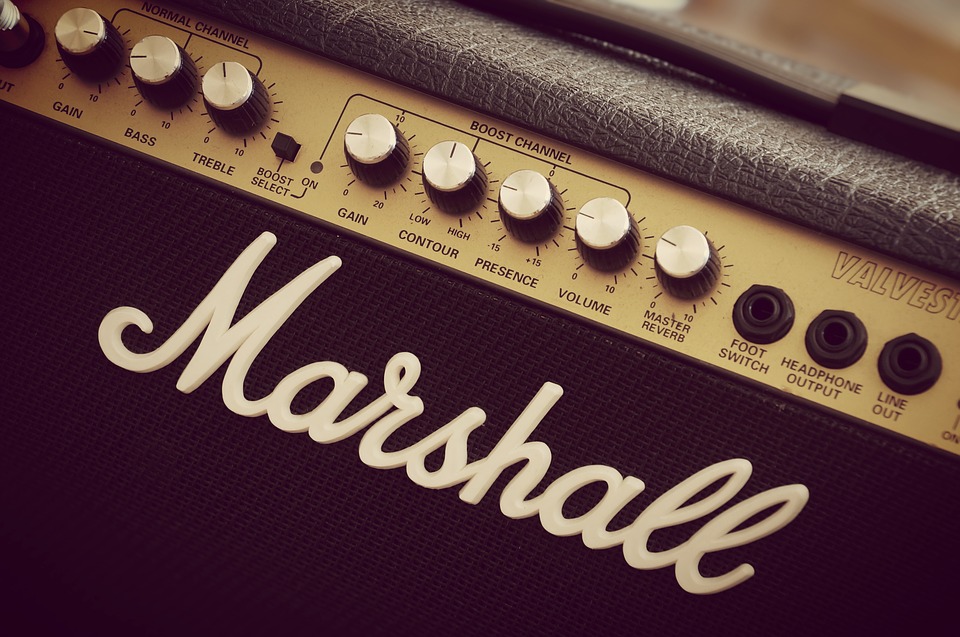
Well, what is the rating of quality amplifiers without Marshal? The combo is small in size, but very loud with great tube sound. The clean channel is especially pleasing. Overdrive is a little trickier as it takes a lot of patience and skill to get a fat, meaty sound. However, the Marshalls, although they emit high-quality overdrive sounds, are still not intended for heavy music (Hard & Heavy maximum).
However, what is worth paying attention to is that the amplifier, alas, has already been discontinued.
| A TYPE | For electric guitars |
|---|---|
| SPEAKER | 1 piece - 12 " |
| POWER | 50 Watt |
| EQUALIZER | Yes (three-way) |
| NUTRITION | 110 V |
| PORT (CHANNEL) | 2 pcs: TRS Jack |
| WEIGHT | 23 kg |
| FOOTSWITCH | Yes |
| EFFECTS | there is |
| COUNTRY OF ORIGIN | USA / Vietnam |
| AMPLIFIER | Lamp (5 pcs) |
Benefits:
- As many as 5 lamps;
- Very high quality Clean;
- Compact;
- Wide range of sound.
Disadvantages:
- Voltage 110V;
- In connection with the point above, you will have to buy a step-down transformer;
- Out of production.
Output:
There are still a lot of Marshal MA50Cs left in nature, so if American sound is the criterion of choice for you, then this amp will certainly do. But it will be very difficult to find it in stores.
4th place - Orange Rockerverb 50 MKII 212
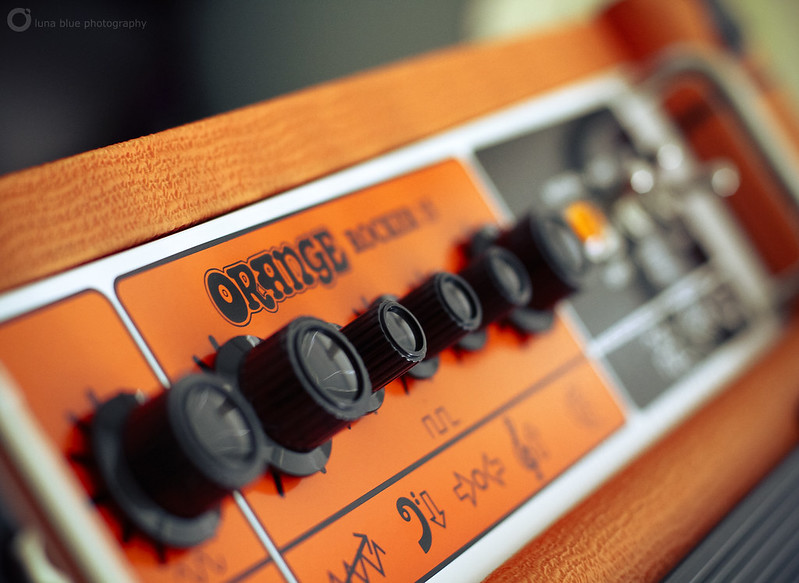
Orange combo from Orange climbed very high. Right in front of the leaders is the favorite of session guitarists. They love it not only for the fact that it can be carried without problems, but also for its high-quality sound. This is especially true of the new revised version, which, by the way, was improved on the advice of users.
The modified version, in contrast to the original, has several improvements, such as: adjusting the middle frequencies on a "clean" channel, a more understandable system of effects, etc.
| A TYPE | For electric guitars |
|---|---|
| SPEAKER | 2 pcs 12 " |
| POWER | 50 watts (can be switched to 25 watts) |
| EQUALIZER | Yes (three-way) |
| NUTRITION | 220 V |
| PORT (CHANNEL) | 2 pcs: TRS Jack |
| WEIGHT | 37 kg |
| FOOTSWITCH | Yes |
| EFFECTS | there is |
| AMPLIFIER | Lamp |
| EFFECT LOOP | there is |
Benefits:
- Popularity among musicians;
- High sound quality;
- Suitable for both concerts and recording.
Disadvantages:
- There is room to grow.
Output:
Many users note that this device has no shortcomings. However, if it were so, then no company would be better than Orange. However, minor flaws will not allow Orange to rise above the four.
3rd place - Fender Deluxe Reverb
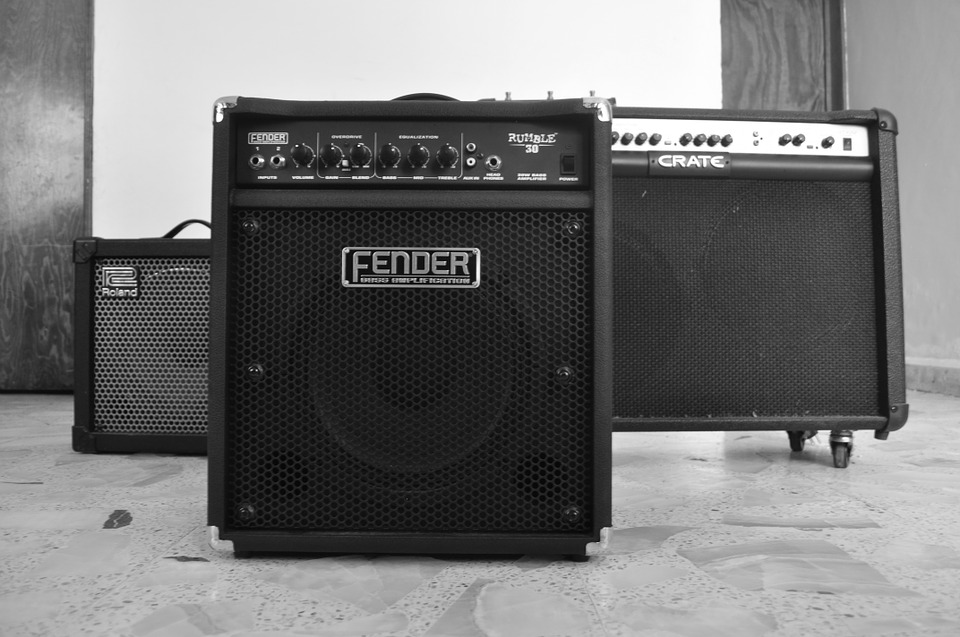
The famous Fender opens the pedestal of the winners. Convenient small "combo" with a worldwide reputation. In terms of technical characteristics, it is excellent for small concerts or for a studio.
This amplifier sounds very much like the old school. So if you decide to play jazz or blues, then the Deluxe Reverb is a great option.
| A TYPE | For electric guitars |
|---|---|
| SPEAKER | 1 pc of 12 " |
| POWER | 22 Watt |
| EQUALIZER | Yes (three-way for each channel) |
| NUTRITION | 220 V |
| PORT (CHANNEL) | 2 pcs: TRS Jack |
| WEIGHT | 20 kg |
| FOOTSWITCH | Yes |
| EFFECTS | there is |
| AMPLIFIER | Lamp |
| PRODUCTION | Vietnam |
Benefits:
- The same vintage Fender "voice";
- Compactness;
- High quality everything from build to sound output.
Disadvantages:
- Low power;
- High price.
Output:
Not a bad competitor to Orange in terms of mobile equipment of the highest quality.
2nd place - VOX AC 30
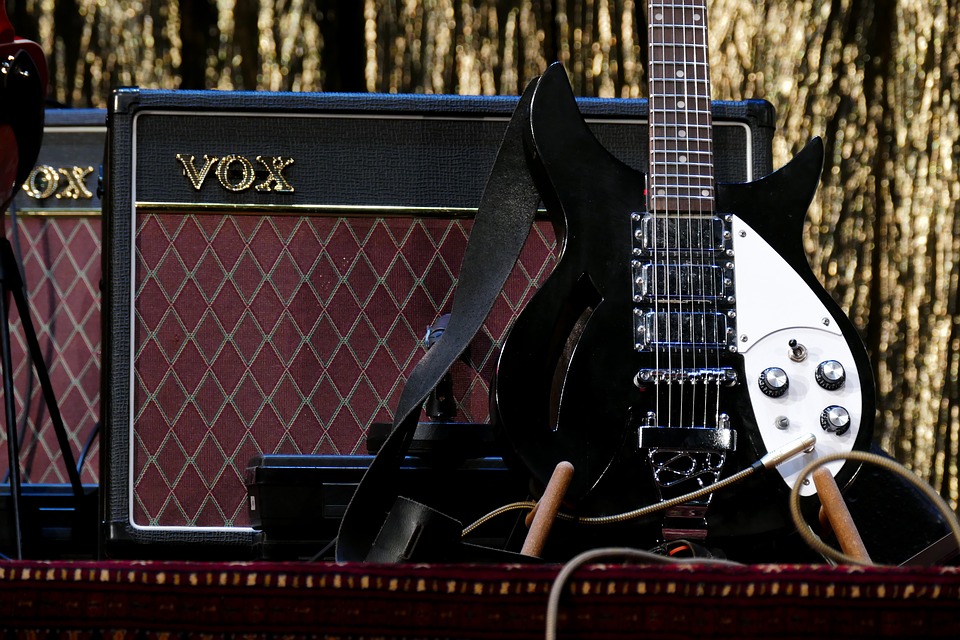
A description of this amp cannot be made without mentioning the name of Brian Maya (Queen). His guitar made famous characteristic sounds from this amp. If you are not a fan of classic rock, then you can remember the name of the leader of the Foo Fighters - Dave Grohl, who also prefers this model.
However, many other names are associated with AC30: The Beatles, Keith Richards (Rolling Stones), Ritchie Blackmore (Deep Purple), from modern - Fall Out Boy and many others.
| A TYPE | For electric guitars |
|---|---|
| SPEAKER | 2 pcs 12 " |
| POWER | 30 Watt |
| EQUALIZER | Yes (three-way for each channel) |
| NUTRITION | 220 V |
| PORT (CHANNEL) | 2 pcs: TRS Jack |
| WEIGHT | Depending on the series: 19-32 kg |
| FOOTSWITCH | Yes |
| EFFECTS | there is |
| AMPLIFIER | Lamp |
| EFFECT LOOP | there is |
Benefits:
- Unique sound of old rock;
- Excellent reviews and recommendations from the most famous music stars;
- Quality and power.
Disadvantages:
- We proudly declare - this combo has no disadvantages!
Output:
The question arises: why didn't this combo get the first place? Am I making the mistake of choosing a combo with the VOX AC30? The answer to the first question is time. It does not stand still and moves forward, technologies develop, and amp models are consistently improved. By purchasing VOX, you will not make a mistake, but remember that there are better devices.
1st place - Fender Twin Reverb
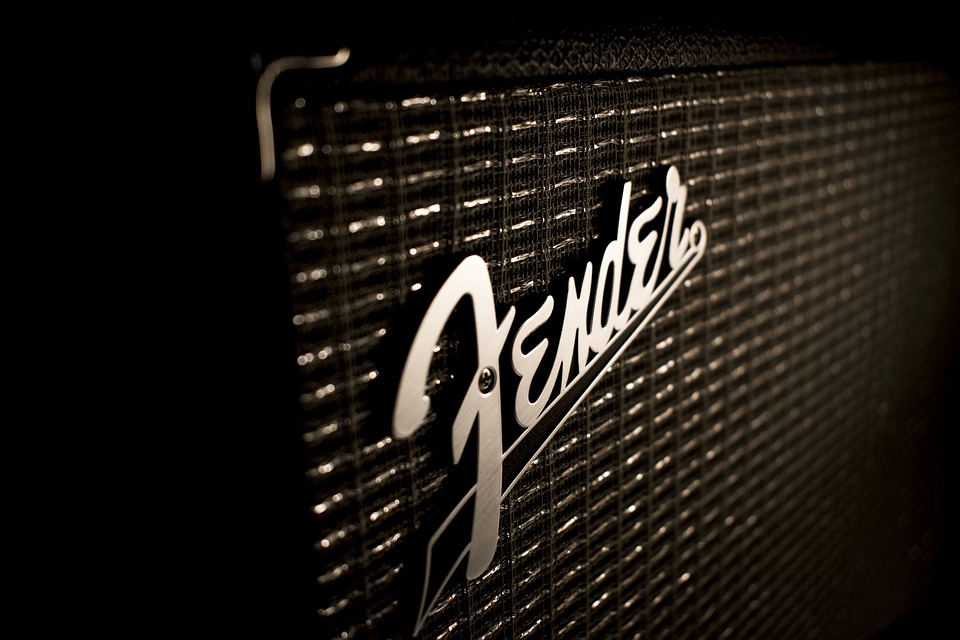
And finally, the winner is Fender! The model is made for the classics. The clear sound of this equipment is considered one of the best in the world.
| A TYPE | For electric guitars |
|---|---|
| SPEAKER | 2 pcs 12 " |
| POWER | 30 Watt |
| EQUALIZER | Yes (three-way for each channel) |
| NUTRITION | 220 V |
| PORT (CHANNEL) | 2 pcs: TRS Jack |
| WEIGHT | Depending on the series: 19-32 kg |
| FOOTSWITCH | Yes |
| EFFECTS | there is |
| AMPLIFIER | Lamp |
| EFFECT LOOP | there is |
Benefits:
There are a lot of them and, unfortunately, a day is not enough to describe them all. However, here are some:
- Great power;
- Incredible clear sound;
- The most famous brand of combo amplifiers;
- Can be tilted back (there are special legs for this);
- And many many others.
Disadvantages:
- High price;
- Application is limited to concert activities (less often to studio).
Output:
Awesome device for those who can afford it. Many artists with the name use the Fender Twin Reverb for their live performances.
In custody
A lot of interesting things await us ahead. Who knows what combo amps will be like in 5 years. Perhaps on digital models there will be slots for special cards that would take the musician to the stage of Wembley Stadium or something like that. In any case, connoisseurs will always remember the good old lamp.
Do you like the rating? Don't agree with the location of the seats? Write your feedback and suggestions in the comments.


